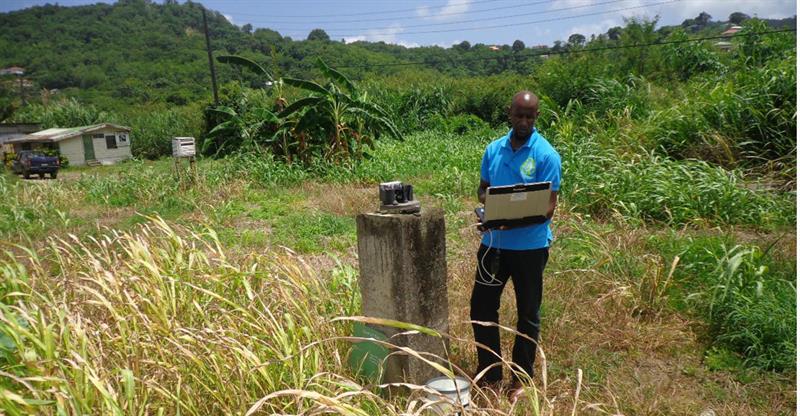THE DVRP HAS INVESTED IN TRAINING NEEDS ANALYSES AND TRAINING PLANS FOR EACH AGENCY.
 Saint Lucia once again finds itself under a drought warning. Local rainfall patterns continue to change as a result of global climate change, creating more frequent and severe droughts. Of recent note was the 2010 drought followed by Hurricane Tomas later that year. As a country that depends primarily on surface water from rivers, this results in tremendous stress on Saint Lucia’s water supply system. Adapting to this new reality will require smarter, more sustainable approaches to managing the country’s water supply, starting with better management of the water resource itself.
Saint Lucia once again finds itself under a drought warning. Local rainfall patterns continue to change as a result of global climate change, creating more frequent and severe droughts. Of recent note was the 2010 drought followed by Hurricane Tomas later that year. As a country that depends primarily on surface water from rivers, this results in tremendous stress on Saint Lucia’s water supply system. Adapting to this new reality will require smarter, more sustainable approaches to managing the country’s water supply, starting with better management of the water resource itself.
Rainfall is not the only weather variable being affected by climate change. Temperature, relative humidity, wind patterns and the nature of extreme weather events are also changing. Understanding how these variables are changing in the long-run and better predicting immediate impacts from adverse weather systems and conditions requires enhanced local meteorological capabilities.
In order to boost the capacity of the Water Resources Management Agency (WRMA) and the Saint Lucia Meteorological Services to respond to the challenge, the DVRP has invested in, among other things, training needs analyses and development of short and long-term training plans for each agency. The consultancy to develop the training plans was successfully concluded at the end of February 2020. To ensure sustainability and continuity of operations, the training plans include a range of training methods, including online training, instructor led on-site training, staff-led training and continued learning through access to journals and periodicals.
For the WRMA, the training plan covers a wide range of subjects such as rainfall statistics in hydrology, modeling river discharge, use of real-time data to predict flash floods, developing water balance analysis for river basins, Geographic Information Systems (GIS) in hydrology, satellite remote sensing and geospatial studies for water resources management, and hydromet observing stations operation and maintenance.
The WRMA has already begun actioning the recommendations made by this consultancy, including for instance having 7 of its officers trained virtually in Integrated and Adaptive Water Resources Management (IWRM) through McGill University in Canada. In addition to some of the subjects covered in the WRMA Training Plan, the Meteorological Services Training Plan covers areas such as statistics in climatology, fundamentals of atmospheric science, radar mete-orology, and meteorological and hydrometeorological network design, specifications, maintenance and troubleshooting. Through the DVRP, the Meteorological Services has already started investing over the past three years in training of its staff at the regional level in meteorology through the Caribbean Institute for Mete-orology and Hydrology (CIMH) in Barbados.
Other investments planned to address the imminent drought are the procurement of water tanks for the National Emergency Management Organization (NEMO) and the rehabilitation of the water intake at Millet. Look out for these stories in the issue to follow.